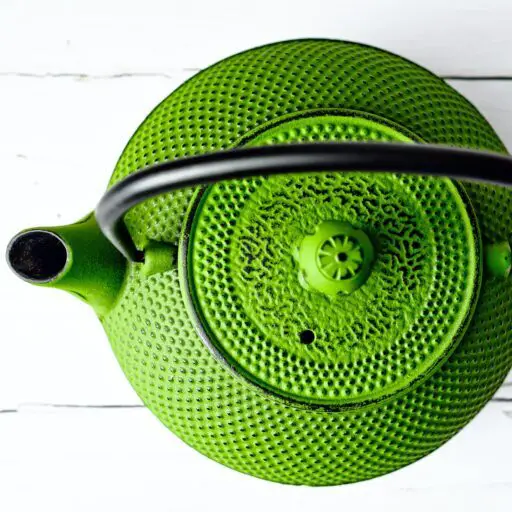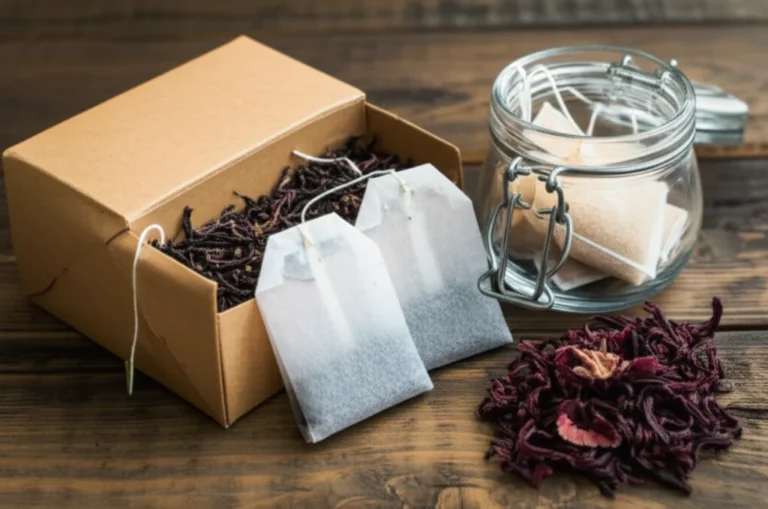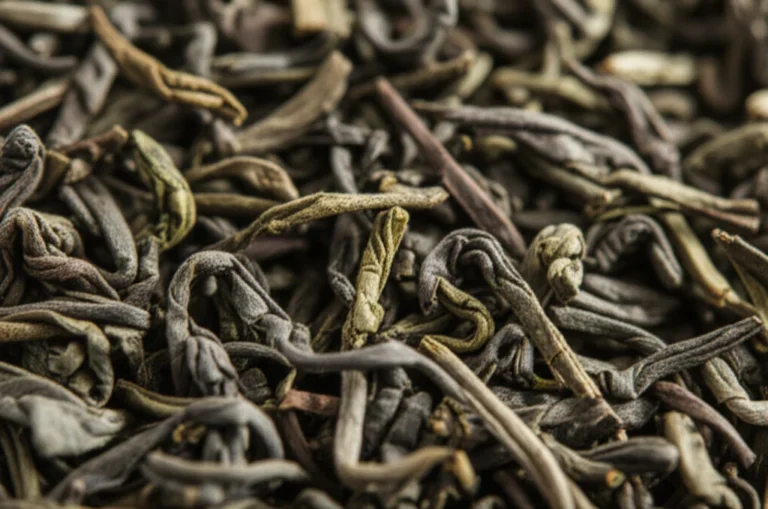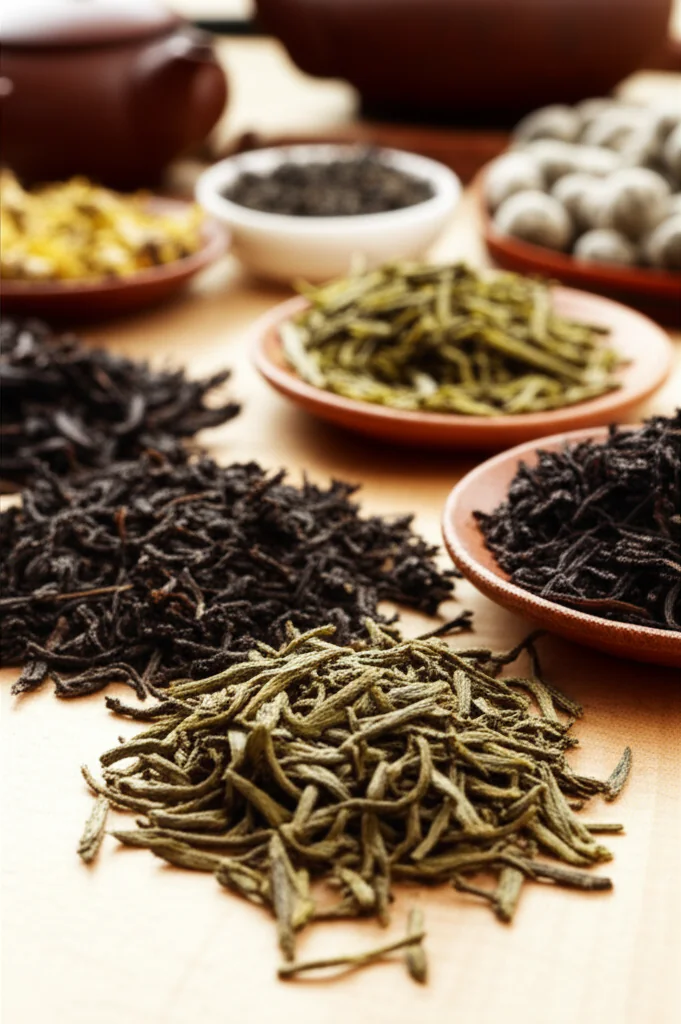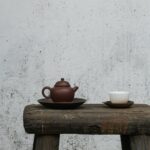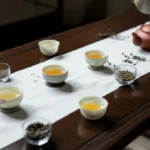Support our educational content for free when you purchase through links on our site. Learn more
🚫 12 Tea Brands to Stay Away From in 2025: What’s Brewing in Your Cup?
Have you ever wondered what’s really steeping in your tea bag? We did too—until a shocking discovery revealed that some of the most popular tea brands might be serving you more than just a comforting brew. From hidden pesticides to plastic-infused bags releasing billions of microplastics per cup, the tea industry has some steep challenges that could affect your health and the environment. But don’t worry—we’re here to spill the tea on which brands to avoid and how to choose safer, cleaner options that taste amazing and keep you safe.
In this article, we’ll reveal our expert blacklist of 12 tea brands that have raised red flags for contamination, misleading labeling, and unethical practices. Plus, we’ll share insider tips on spotting unsafe teas, the science behind tea contaminants, and our top trusted brands that deliver pure, flavorful cups you can sip with confidence. Ready to become a savvy tea detective? Let’s dive in!
Key Takeaways
- Beware of plastic tea bags that release billions of microplastics into your cup—choose loose leaf or plastic-free bags instead.
- Many popular brands like Lipton, Twinings, and Celestial Seasonings have been found with harmful pesticide residues.
- Look for certifications such as USDA Organic, Fair Trade, and B Corp to ensure safer and ethically sourced teas.
- “Natural flavors” on labels often mask synthetic additives—always check ingredient transparency.
- Switching to trusted brands like Traditional Medicinals, Pukka Herbs, and Choice Organics can safeguard your health and the planet.
Ready to shop smarter? Check out our recommended safe tea brands in the article to elevate your tea ritual!
Table of Contents
- ⚡️ Quick Tips and Facts About Tea Brands to Avoid
- 🍃 Brewing Trouble: The History and Background of Questionable Tea Brands
- 🚫 12 Tea Brands to Stay Away From: Our Expert Blacklist
- ⚖️ How to Spot Unsafe Tea Brands: Red Flags and Warning Signs
- 🌿 What Makes a Tea Brand Safe? Key Ingredients and Certifications to Look For
- 🛒 Shopping Smart: Where to Buy Trusted and Transparent Tea Brands
- 💡 Brewing Tips to Maximize Safety and Flavor from Your Tea
- 📊 Consumer Insights: What Real Tea Lovers Say About Brand Safety
- 🌍 The Environmental Impact of Tea Brands: Why It Matters to Your Cup
- 🔍 Deep Dive: The Science Behind Tea Contaminants and Health Risks
- 🍵 Safe Tea Brands You Can Trust: Our Top Recommendations
- 📝 Conclusion: Sip Safely and Enjoy Every Cup
- 🔗 Recommended Links for Further Reading
- ❓ FAQ: Your Burning Questions About Tea Brand Safety Answered
- 📚 Reference Links and Sources
Hello, fellow tea lovers! It’s your expert team at “Tea Brands™,” where we live and breathe everything tea. We’ve spent countless hours sipping, savoring, and scrutinizing teas from around the globe. While we adore celebrating the best tea brands in the world, our passion for a perfect cup also means we’ve encountered some… less-than-stellar brews. Today, we’re spilling the tea on the brands you might want to leave on the shelf. Grab your favorite mug, and let’s dive in!
⚡️ Quick Tips and Facts About Tea Brands to Avoid
Short on time? Here’s the fast track to a safer sip:
- Plastic is a Problem: Many popular tea bags are sealed with polypropylene, a plastic that can shed billions of micro and nanoplastic particles into your cup when steeped in hot water.
- Pesticide Peeves: Non-organic tea leaves are often not washed before drying, meaning pesticide residues can end up directly in your brew.
- “Natural Flavors” Aren’t So Natural: This vague term can hide a cocktail of synthetic ingredients, often derived from petroleum.
- Hidden Health Risks: Some tea bags are treated with chemicals like epichlorohydrin to make them stronger, a substance linked to health concerns.
- Forever Chemicals: Recent studies have raised concerns about PFAS (per- and polyfluoroalkyl substances), also known as “forever chemicals,” being found in some tea bags and even the tea leaves themselves.
- Go Loose Leaf: The easiest way to avoid bag-related issues is to switch to loose-leaf tea. It’s often higher quality and more flavorful, too!
🍃 Brewing Trouble: The History and Background of Questionable Tea Brands
Tea has been a beloved beverage for centuries, but the modern era of mass production has introduced some murky issues into our teacups. The journey from a pristine tea field to your mug is longer and more complex than you might imagine.
In the quest for convenience and low costs, many companies began using finely ground tea “dust” and “fannings” (the small particles left over from processing higher-grade teas) to fill their tea bags. This not only affects the flavor but also concentrates potential contaminants.
The real trouble began brewing with the materials used for the tea bags themselves. To prevent paper bags from dissolving in hot water, manufacturers started adding plastic fibers like polypropylene. Then came the “silken” pyramid bags, often made from PET or PLA plastics, which were marketed as a premium option but introduced a new set of concerns about leaching chemicals at high temperatures.
Furthermore, as global demand soared, so did the pressure on tea plantations to increase yields, leading to the widespread use of pesticides and synthetic fertilizers. Unlike other produce, tea leaves are typically not rinsed after harvesting, meaning those chemicals can go straight from the field into your cup. This has led to numerous reports and studies over the years finding surprising levels of pesticides in popular tea brands.
🚫 12 Tea Brands to Stay Away From: Our Expert Blacklist
Alright, let’s get to the heart of the matter. Based on our tasting experience, consumer reports, and independent studies on pesticides and materials, here are some brands that have raised red flags for us.
It’s important to note that brands can change their practices, and some may offer organic lines that are safer than their conventional products. However, the brands listed below have historically been cited for issues like high pesticide residues, plastic in their tea bags, or a lack of transparency.
1. Brands with Harmful Pesticides and Chemicals
These brands have been mentioned in various reports over the years for containing pesticide levels that exceed safety limits or for using a cocktail of different chemicals.
- Lipton: As one of the biggest tea brands in the world, Lipton has faced scrutiny in multiple investigations for pesticide residues in its products.
- Twinings of London: Despite its prestigious image, some of Twinings’ non-organic teas have been found to contain pesticides.
- Celestial Seasonings: A 2013 study highlighted this brand for having pesticide residues that exceeded U.S. federal limits.
- Tetley: This popular brand has also been named in studies finding multiple pesticides in its tea leaves.
- Tazo: Now owned by a private equity firm after being sold by Starbucks, Tazo’s conventional teas have been a source of concern for contaminants.
- Teavana: Another brand formerly owned by Starbucks, Teavana has been cited for pesticides and artificial flavorings.
2. Brands Using Plastic-Infused Tea Bags
The discovery that plastic tea bags can release billions of microplastic particles was a wake-up call for many tea drinkers. While some companies are moving toward plant-based and compostable materials, many still use bags containing plastics.
- Bigelow: While a family-owned company, some of their traditional tea bags are known to contain plastic.
- Harney & Sons: Many of their beautiful sachets are made from nylon or PET, which are types of plastic.
- Good Earth: Their pyramid-style bags have also been identified as being made from plastic materials.
3. Brands with Misleading Labeling and False Claims
This category is all about transparency. We get wary when brands use vague terms like “natural flavors” without specifying the source or make health claims that aren’t backed by clear, accessible testing.
- Trader Joe’s: While they offer many great products, their store-brand teas often lack transparency regarding sourcing and materials.
- Any brand relying heavily on “Natural Flavors”: As the expert in the featured video points out, “Natural flavors really are another word for artificial flavors.” This is a red flag across the board. Look for brands that list real ingredients like “organic peppermint leaf” or “real bergamot oil.”
4. Brands with Poor Ethical and Environmental Practices
How a tea is produced matters just as much as what’s in it. We look for brands that prioritize fair treatment of workers and sustainable farming.
- Brands without certifications: If a brand has no Fair Trade, Rainforest Alliance, or B Corp certification, it’s harder to know if they are committed to ethical practices. While not a guarantee of poor practices, a lack of these certifications warrants a closer look.
⚖️ How to Spot Unsafe Tea Brands: Red Flags and Warning Signs
Feeling overwhelmed? Don’t be! We’re here to empower you. Think of yourself as a tea detective. Here are the clues to look for:
- Vague Ingredient Lists: ❌ If you see “natural flavors,” “artificial flavors,” or “essences,” be skeptical. High-quality teas, which you can find in our Tea Brand Guides, will list specific ingredients.
- Lack of Organic Certification: ❌ The USDA Organic seal is your first line of defense against synthetic pesticides and fertilizers.
- Plastic or “Silken” Tea Bags: ❌ If the bag feels slick or is a pyramid shape, it’s likely made of plastic (nylon, PET, or PLA). Look for paper bags that are stapled or sewn, or better yet, choose loose leaf.
- Bleached White Bags: ❌ Some paper bags are bleached with chlorine. Look for unbleached, brownish-colored bags or brands that specify they are “totally chlorine-free” (TCF).
- No Information on Sourcing: ✅ A trustworthy brand will be proud to tell you where their tea comes from. Check their website for information on the region or even the specific tea estate.
🌿 What Makes a Tea Brand Safe? Key Ingredients and Certifications to Look For
Now for the good news! There are plenty of amazing, safe, and delicious teas out there. Here’s your cheat sheet for finding them:
| Certification/Feature | What It Means for Your Tea |
|---|---|
| USDA Organic | The tea was grown without synthetic pesticides, herbicides, or fertilizers. This is a must-have for us. |
| Non-GMO Project Verified | Ensures that the tea and any other ingredients (like herbs or flavorings) are not genetically modified. |
| Certified B Corporation | This company meets high standards of social and environmental performance, accountability, and transparency. |
| Fair Trade Certified | Guarantees that farmers and workers were paid a fair wage and work in safe conditions. |
| Rainforest Alliance | Indicates that the tea was grown on farms that meet rigorous standards for protecting wildlife, forests, and workers. |
| Plastic-Free Tea Bags | The brand explicitly states their bags are made from materials like hemp, cotton, or unbleached paper and are free of plastics. |
| Real Ingredients | The ingredient list contains things you recognize: “organic ginger root,” “organic hibiscus flower,” “cinnamon bark.” |
🛒 Shopping Smart: Where to Buy Trusted and Transparent Tea Brands
You don’t have to go on a wild goose chase to find great tea. Here are our go-to spots:
- Specialty Tea Shops: Local or online, these retailers are often run by passionate experts who can tell you the story behind every leaf.
- Health Food Stores & Co-ops: Places like Whole Foods or your local co-op often have a great selection of organic and ethically sourced teas.
- Directly from the Brand: Many of our favorite safe brands have excellent online stores where you can find their full range of products.
- Farmers’ Markets: You might be surprised to find local blenders or herbalists selling their own high-quality, small-batch teas.
💡 Brewing Tips to Maximize Safety and Flavor from Your Tea
How you brew can make a difference!
- Embrace Loose Leaf: This is the single best change you can make. It eliminates any concerns about tea bag materials and gives the tea leaves room to expand, releasing more flavor.
- Use an Infuser: Invest in a good stainless steel or glass infuser. They’re easy to use, easy to clean, and will last forever.
- Control Your Water Temperature: Don’t scorch your tea! Delicate green and white teas need lower temperatures (around 175°F/80°C), while black and herbal teas can handle boiling water (212°F/100°C).
- Don’t Oversteep: Follow the brewing instructions for your specific tea. Oversteeping can lead to a bitter taste.
- Use Filtered Water: Your tea is 99% water, so using clean, filtered water will result in a much better-tasting and purer cup.
📊 Consumer Insights: What Real Tea Lovers Say About Brand Safety
We’re not the only ones concerned about what’s in our tea. A growing movement of informed consumers is demanding more from tea companies. Online forums and social media are buzzing with discussions about plastic-free bags, organic sourcing, and the truth behind “natural flavors.”
The consensus? People are willing to invest a little more for a tea they can trust. They’re tired of misleading marketing and want transparency. As one commenter on a Reddit thread about microplastics in tea bags put it, “This movement, unlike climate change, is easy because right and left wing people agree.” The message is clear: we want clean, healthy, and honest tea.
🌍 The Environmental Impact of Tea Brands: Why It Matters to Your Cup
The health of our planet is directly linked to the health of our tea. Unsustainable farming practices don’t just harm the environment; they can lead to lower-quality tea that’s more likely to be contaminated.
- Soil Health: Organic and regenerative farming practices create healthier soil. Healthier soil means healthier tea plants that are more resistant to pests, reducing the need for chemical interventions.
- Biodiversity: Sustainable tea farms often incorporate shade trees and other plants, creating a habitat for wildlife and promoting a balanced ecosystem.
- Water Conservation: Practices like rainwater harvesting and drip irrigation, often encouraged by sustainability certifications, help conserve water in tea-growing regions.
- Waste Reduction: Choosing loose-leaf tea or brands with compostable packaging helps reduce the amount of waste going to landfills.
When you choose a brand that cares about the environment, you’re not just getting a better cup of tea—you’re supporting a healthier future for everyone.
🔍 Deep Dive: The Science Behind Tea Contaminants and Health Risks
Let’s put on our lab coats for a moment. What are these contaminants, and why are they a concern?
- Microplastics and Nanoplastics: A 2019 McGill University study famously found that a single plastic tea bag steeped at 95°C could release about 11.6 billion microplastics and 3.1 billion nanoplastics. While the full health effects are still being studied, research has linked microplastic exposure to issues like tissue inflammation and cell damage.
- Pesticides: These chemicals are designed to be toxic to insects and fungi, and they can have unintended consequences for human health. Long-term exposure has been linked to endocrine disruption, reproductive issues, and other serious health problems.
- PFAS (“Forever Chemicals”): These chemicals are used to make products resistant to water and grease, and they’ve been found in some food packaging, including tea bags. They are called “forever chemicals” because they don’t break down easily in the environment or our bodies. Studies have linked higher consumption of tea to increased levels of PFAS in the body.
- Fluoride: Tea plants naturally absorb fluoride from the soil. While fluoride is beneficial for dental health in small amounts, excessive intake can be a concern, especially from lower-quality teas made from older leaves, which accumulate more fluoride.
🍵 Safe Tea Brands You Can Trust: Our Top Recommendations
After all that, you deserve a truly wonderful—and safe—cup of tea! Here are a few brands that consistently earn our trust and a spot in our personal tea cabinets. We’ve highlighted them in our Tea Brand Spotlights before, and they continue to impress.
-
Traditional Medicinals: A pioneer in the wellness tea space, this employee-owned B Corp is dedicated to quality. They use pharmacopoeial-grade, organic herbs and have rigorous testing standards. Their tea bags are plastic-free and compostable.
- 👉 Shop Traditional Medicinals on: Amazon | Walmart | Traditional Medicinals Official Website
-
Pukka Herbs: Pukka is another Certified B Corporation that creates beautiful, flavorful, and organic specialty blends. They were one of the first companies to use organic, staple-free, and plastic-free tea bags. Their commitment to ethical and sustainable sourcing is top-notch.
- 👉 Shop Pukka Herbs on: Amazon | Walmart | Pukka Herbs Official Website
-
Choice Organics: As the first exclusively organic tea company in the U.S., Choice has been a trusted name for decades. They are Non-GMO Project Verified, and their tea bags are made from natural, unbleached manila hemp and are staple-free.
- 👉 Shop Choice Organics on: Amazon | Walmart | Choice Organics Official Website
-
Numi Organic Tea: Numi is a B Corp that is serious about clean ingredients and sustainability. They use organic, real ingredients (no “natural” flavors) and their tea bags are biodegradable and compostable.
- 👉 Shop Numi Organic Tea on: Amazon | Walmart | Numi Official Website
📝 Conclusion: Sip Safely and Enjoy Every Cup
Phew! That was quite the steeping session, wasn’t it? We’ve journeyed through the murky waters of pesticide residues, plastic-infused tea bags, and misleading labels to emerge with a clearer picture of what to avoid — and more importantly, what to embrace.
The takeaway? Not all teas are created equal. Some of the biggest, most recognizable brands like Lipton, Twinings, and Celestial Seasonings have been flagged repeatedly for pesticide contamination and plastic packaging. While these brands may offer convenience and familiarity, the hidden costs to your health and the environment are too significant to ignore.
On the flip side, brands like Traditional Medicinals, Pukka Herbs, Choice Organics, and Numi Organic Tea have earned our wholehearted trust. They combine organic, pesticide-free leaves, plastic-free packaging, and ethical sourcing to deliver a cup that’s both delicious and safe. Our expert tasters at Tea Brands™ have personally enjoyed their nuanced flavors and peace of mind.
So, if you’ve been wondering whether that convenient tea bag is worth the risk, now you know: opt for organic, transparent brands and loose leaf whenever possible. Your body, taste buds, and the planet will thank you.
Remember, every cup is a choice — make yours a safe and satisfying one. ☕️💚
🔗 Recommended Links for Further Reading & Shopping
Ready to upgrade your tea game? Here are some trusted brands and resources to explore:
-
Traditional Medicinals:
Amazon | Walmart | Traditional Medicinals Official Website -
Pukka Herbs:
Amazon | Walmart | Pukka Herbs Official Website -
Choice Organics:
Amazon | Walmart | Choice Organics Official Website -
Numi Organic Tea:
Amazon | Walmart | Numi Official Website -
Books to Deepen Your Tea Knowledge:
- The Tea Book by Linda Gaylard — Amazon Link
- The Story of Tea: A Cultural History and Drinking Guide by Mary Lou Heiss and Robert J. Heiss — Amazon Link
- Tea: History, Terroirs, Varieties by Kevin Gascoyne et al. — Amazon Link
❓ FAQ: Your Burning Questions About Tea Brand Safety Answered
Which tea brands have been reported for poor quality or contamination?
Several well-known brands have been flagged in independent studies and consumer investigations for pesticide residues and plastic packaging concerns. These include Lipton, Twinings, Celestial Seasonings, Tetley, Tazo, and Teavana. For example, a 2013 study by the Sadaka Firm highlighted Celestial Seasonings for pesticide levels exceeding government limits. Greenpeace India’s investigation found multiple pesticides in teas from brands like Lipton and Tetley. While these brands may have organic lines, their conventional products often lack transparency and rigorous testing.
What are the signs of low-quality tea brands to avoid?
Look out for these red flags:
- Vague ingredient lists featuring “natural flavors” or “artificial flavors” without specifics.
- Non-organic certification or absence of third-party testing seals.
- Plastic or nylon tea bags, especially pyramid-shaped ones, which release microplastics when steeped.
- Bleached white tea bags indicating chlorine use, which can leave harmful residues.
- Lack of sourcing transparency—if the brand doesn’t share where or how their tea is grown, it’s harder to trust their quality.
Are there any tea brands known for misleading health claims?
Yes. Some brands use ambiguous marketing terms like “detox,” “immune-boosting,” or “natural” without scientific backing or clear ingredient transparency. Additionally, “natural flavors” can mask synthetic additives derived from petroleum. Brands that do not provide third-party testing or certifications should be approached with caution. Always look for brands that openly share lab results and ingredient sourcing.
How can I identify trustworthy tea brands for a premium experience?
Trustworthy brands will:
- Hold USDA Organic, Non-GMO Project Verified, or Certified B Corporation status.
- Use plastic-free, compostable tea bags or offer loose leaf options.
- Provide full ingredient transparency with real, recognizable ingredients.
- Share detailed sourcing information about their tea estates and farming practices.
- Have positive reviews from both consumers and independent testers.
- Prioritize ethical and sustainable farming practices, often evidenced by Fair Trade or Rainforest Alliance certifications.
For a premium experience, explore brands like Traditional Medicinals, Pukka Herbs, and Choice Organics, which combine quality, safety, and ethical sourcing.
How harmful are microplastics from tea bags to human health?
While research is ongoing, studies such as the 2019 McGill University report have shown that plastic tea bags can release billions of micro- and nanoplastics into your cup. Microplastics have been linked to inflammation and cellular damage in lab studies. Given the potential risks and the availability of plastic-free options, it’s wise to avoid plastic tea bags altogether.
Can loose leaf tea completely eliminate the risk of contaminants?
Loose leaf tea significantly reduces risks associated with plastic tea bags and packaging chemicals. However, contaminants like pesticides or heavy metals can still be present if the tea is not organically grown or properly tested. Choosing certified organic loose leaf tea from reputable brands is the best way to minimize exposure.
📚 Reference Links and Sources
- Greenpeace India Report on Pesticides in Tea:
https://www.greenpeace.org/india/story/tea-pesticide-contamination/ - Sadaka Firm Study on Pesticides in Tea:
https://www.sadakafirm.com/blog/tea-bag-containing-deadly-pesticides/ - McGill University Study on Microplastics in Tea Bags:
https://www.mcgill.ca/newsroom/news/plastic-tea-bags-release-billions-microplastics-nanoplastics-into-cup - Mamavation’s Investigation on Toxic & Plastic Tea Bags:
https://mamavation.com/product-investigations/hidden-ingredients-in-tea-you-wont-find-on-the-label-safe-toxic-teas.html - USDA Organic Certification Details:
https://www.usda.gov/topics/organic - Traditional Medicinals Official Website:
https://www.traditionalmedicinals.com/ - Pukka Herbs Official Website:
https://www.pukkaherbs.com/ - Choice Organics Official Website:
https://www.choiceorganics.com/ - Numi Organic Tea Official Website:
https://numitea.com/
Thanks for joining us on this deep dive! Remember, the best cup of tea is one you can sip with confidence. Stay curious, stay informed, and keep savoring those safe, delicious brews! 🍵✨
